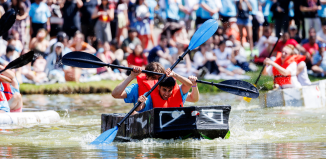Sweetbriar Nature Center hosts baby shower for its youngest guests
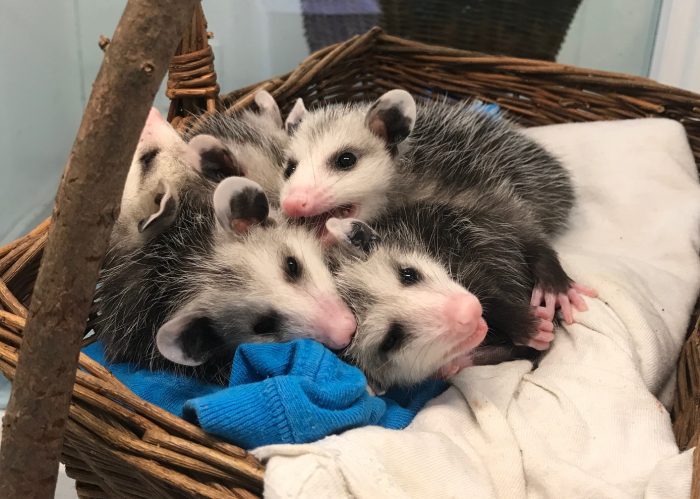
By Tara Mae
Spring harbors hope for new life. A promise of possibility soars on wings of a compassionate community that sees the specialness of not only the human species.
The most beautiful beasts will be in attendance at Sweetbriar Nature Center’s Baby Shower for Wildlife on Sunday, May 5, from 1 to 3 p.m. Come join staff members, volunteers, and ambassador animals to enjoy a meet and greet, crafts, and a walking tour of the property.
An annual event, this preparation party is thrown to help offset the practical and monetary strains that hatchling/birthing season puts on the Center. This year has been particularly taxing as a mild winter led to an early baby boom.
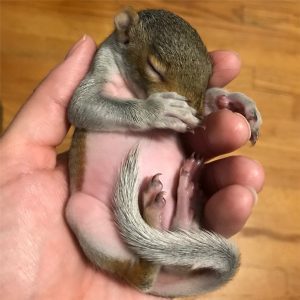
“Honestly you are never prepared for baby season; it comes at different times every year. This year it was very, very early. Ducklings and goslings were being hatched in January. We never really had a winter so to speak…if it is warm and it never gets cold, animals get confused,” Sweetbriar Curator and Wildlife Rehabilitation Director Janine Bendicksen said.
Although it began sooner, it is not winding down, and so supplies are urgently needed.
Like any well organized shower, this one provides a detailed registry for its guests. Curated to the delicate needs of its charges, Sweetbriar’s Amazon Wish List includes rabbit and squirrel formula, meal and wax worms, and supplies like gallon size ziploc bags, trash bags, white vinegar, baby bottle warmers and latex gloves. Monetary donations are also appreciated.
“The public support goes a very long way,” Bendicksen said. “We are not allowed to charge for the care of wildlife, so we are not funded by government entities.” Caring for infants is time consuming, but Sweetbriar is determined that it not be cost prohibitive. It hosts the yearly baby shower as a way to gather the supplies it needs and garner public interest. True to its nature, this event offers opportunities for socializing and promises party activities.
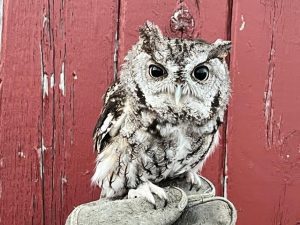
Its guests of honor are Turnip, a screech owl, and Little Blue, a bluejay. Although they are now adults, the attendance of these creatures is particularly poignant. As babies, Turnip and Little Blue each benefitted from a previous shower. Permanent residents of Sweetbriar, they are unable to be rereleased into the wild.
Turnip was injured when the tree in which he resided was knocked over, causing him to fall to the ground and sustain life-altering injuries. Little Blue was born blind. Witnessing their individual distress, concerned citizens reached out to Sweetbriar to save them. Neither animal would have survived without the intervention of the nature center. As with the other ambassador animals, Turnip and Little Blue continue to rely on its resources while educating the public about wildlife and conservation.
These are lessons that Bendicksen hopes citizens heed.
“If you find wildlife and you know it needs help, make a phone call before doing anything,” she said. “One of the biggest mistakes is feeding the animal, causing the animal to aspirate. It is easier to bring back a dehydrated animal rather than an aspirated animal. On our social media we give you options, including how to re-nest baby birds, baby squirrels, etc.,”
Sweetbriar’s primary service is as a rehabilitation for injured and/or orphaned animals, but part of its efforts include teaching individuals what to do if they encounter an animal they fear may be in distress. Correcting any well-intentioned misconceptions about “saving” wild animals is a large component of that.
“If you find a nest and everything seems normal — nothing has attacked it — leave it alone and enjoy it. For instance, baby birds fledge [go to the ground], parents feed them on the ground, etc. So educate yourself; do not just Google it. Follow Sweetbriar’s social media — we are constantly educating the public every day. Or just call us,” Bendicksen added.
It may still be difficult to leave an animal alone if an observer notes that an animal is not in distress but may be imperiled by a potential unfortunate encounter, such as with a feral or free range cat. In this or similar scenario, Bendicksen counsels that the animal still be left on its own but advises certain precautions may be taken.
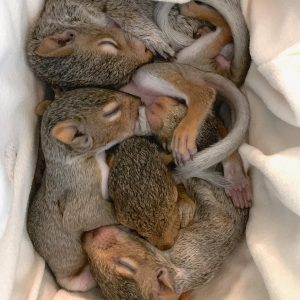
“We do not accept wildlife based on the fact that they may get eaten by something. We have come up with ways to protect wildlife. For a baby bunny nest, put a wheelbarrow over it upside down. For a fledgling on the ground, pick it up and put in a basket outside,” she said.
In general, the objective is to support the animal with as little human interference as possible.
A main goal of Sweetbriar is to rehabilitate the animals in its care so that they may return to their natural habitat. In instances where the animals would not survive being rereleased, they are able to live out their lives in protected enclosures on the nature center’s 54 acres of woodland, field, garden, and wetland habitats along the Nissequogue River.
This shower allows animal lovers to aid Sweetbriar and its charges in a way that enables it to continue offering a healing haven for both the temporary visitors and permanent population. “Our work is a service to the public, and any assistance is a great help,” Bendicksen said.
Tickets to the Baby Shower for Wildlife are $5 for adults and $15 for children. To learn more about the event and to shop the Amazon Wishlist, visit www.sweetbriarnc.org. Located at 62 Eckernkamp Drive in Smithtown, Sweetbriar Nature Center is open daily from 9:30 a.m. to 4:30 p.m. Its preserve is open every day from 9:00 a.m. to 4:30 p.m. For more information, call 631-979-6344.

